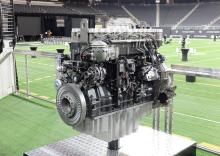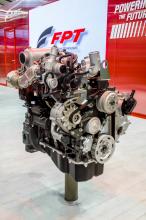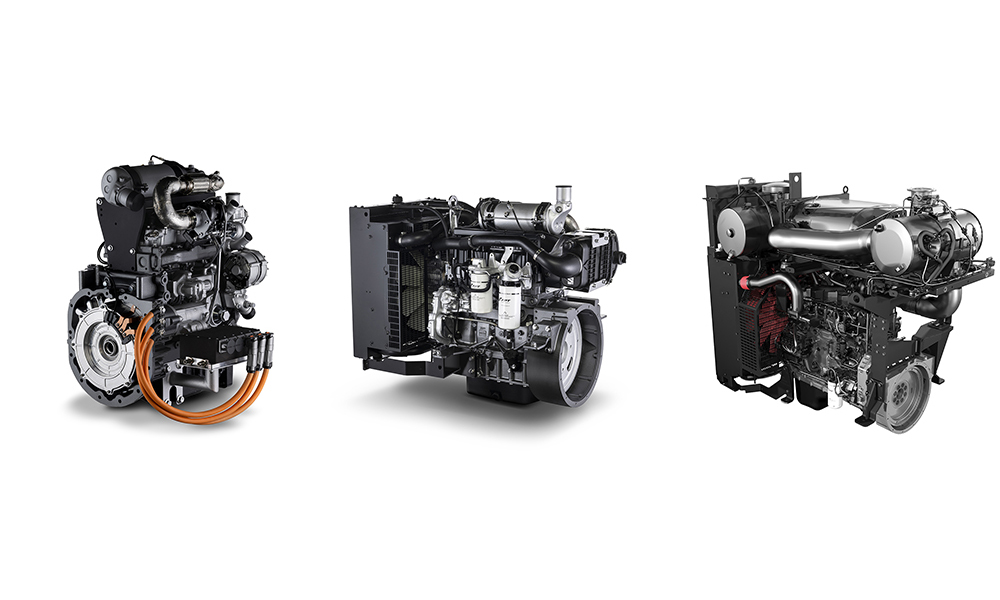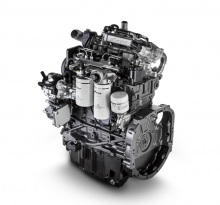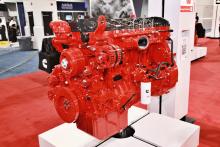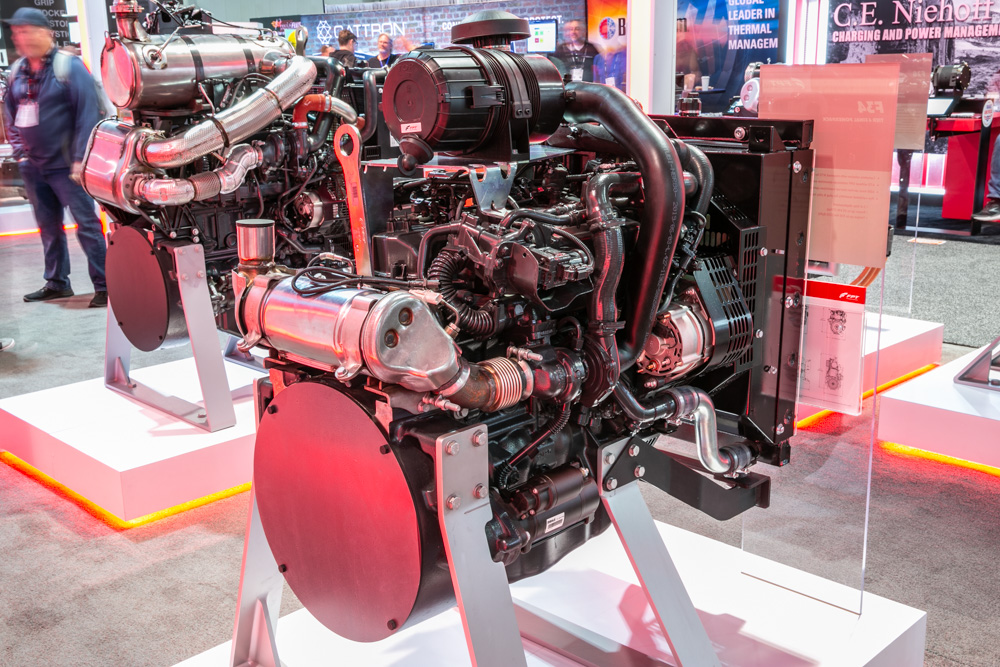
At that time, FPT recognised SCR was the better emissions solution, although pursuing it would be expensive. “Developing engine emissions is not cheap,” said Braden Cammauf, brand vice president of North America for the company.
FPT stuck with SCR and now holds a number of patents on the technology. The company’s engines require only 7% EGR. “What happens with full EGR?” Cammauf asked. “You have a huge radiator.”
The F34 and the F36 Tier 4 Final/Stage V engines do not have that large radiator, and therefore are more much compact and light, Cammauf said.
The F34 powerpack stands out for low operating costs and extremely easy maintenance in a compact layout, the company said. This solution with mounted ATS allows for layout optimisation and plug-and-play installation. The Tier 4 Final compliant ATS, without DPF, minimizes engine downtime and operating costs with a 600-hour service interval.
Engine displacement of the F34 is 3.4 litres. Maximum power is 55 kW and torque is 318 Nm.
Cammauf describes FPT as the “biggest engine company no one has ever heard of.” In the past the engines were branded by other OEMs. The company is now branding them as FPT – an acronym for Fiat Powertrain Technologies.
Nearly 20 years after committing to SCR, FPT faces another decision: which engine power source to pursue? They are exploring hybrid, battery, biodiesel, methane, hydrogen fuel cells, combustible hydrogen, e-axles and e-transmissions.
Once again, FPT will not necessarily take the convenient, or even cheapest, path.
“We’re keeping our options open,” Cammauf said. “We have multiple viable answers and we’re going to invest in every one.”
Booth S83941

